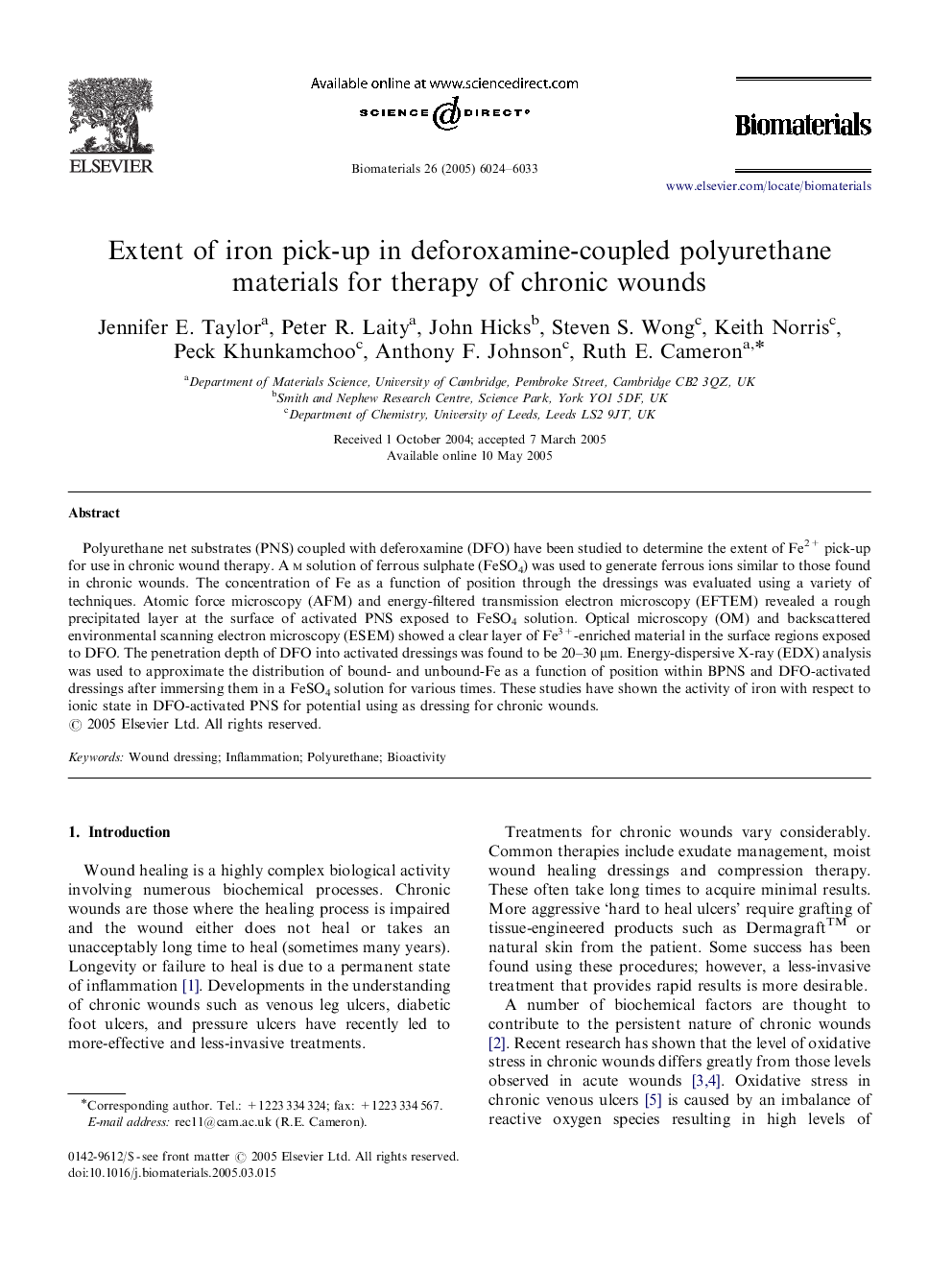| Article ID | Journal | Published Year | Pages | File Type |
|---|---|---|---|---|
| 12220 | Biomaterials | 2005 | 10 Pages |
Polyurethane net substrates (PNS) coupled with deferoxamine (DFO) have been studied to determine the extent of Fe2+ pick-up for use in chronic wound therapy. A m solution of ferrous sulphate (FeSO4) was used to generate ferrous ions similar to those found in chronic wounds. The concentration of Fe as a function of position through the dressings was evaluated using a variety of techniques. Atomic force microscopy (AFM) and energy-filtered transmission electron microscopy (EFTEM) revealed a rough precipitated layer at the surface of activated PNS exposed to FeSO4 solution. Optical microscopy (OM) and backscattered environmental scanning electron microscopy (ESEM) showed a clear layer of Fe3+-enriched material in the surface regions exposed to DFO. The penetration depth of DFO into activated dressings was found to be 20–30 μm. Energy-dispersive X-ray (EDX) analysis was used to approximate the distribution of bound- and unbound-Fe as a function of position within BPNS and DFO-activated dressings after immersing them in a FeSO4 solution for various times. These studies have shown the activity of iron with respect to ionic state in DFO-activated PNS for potential using as dressing for chronic wounds.
